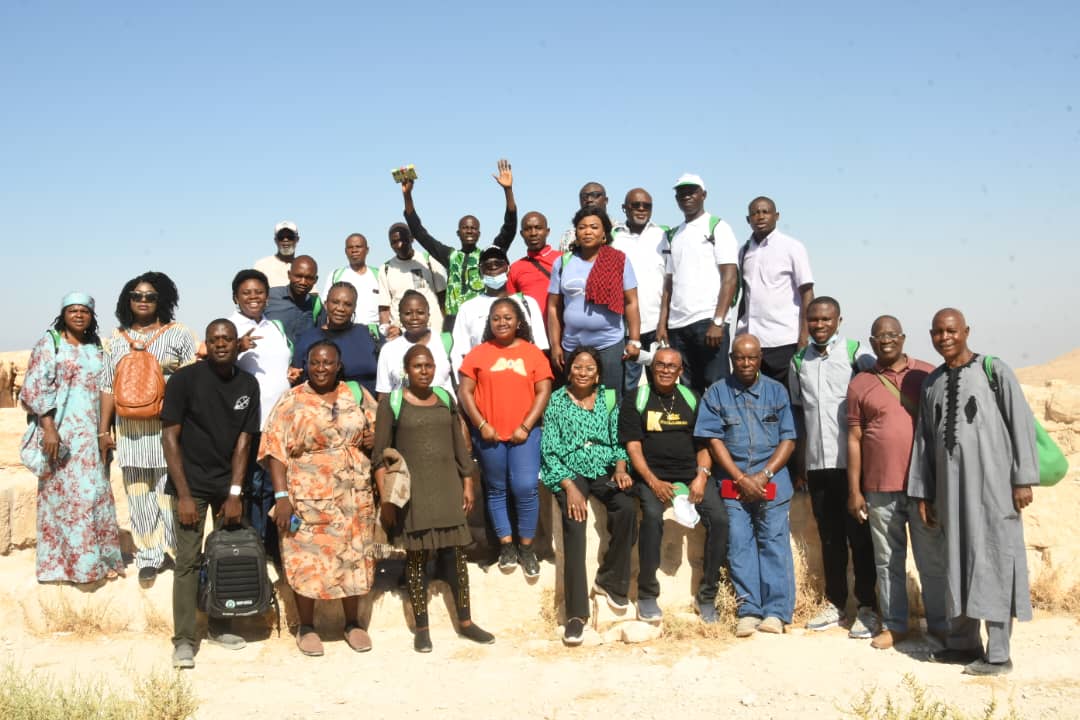Christians have been called upon to resist whatever storm that may stand contrary to the plan of God in their lives.
The message is contained in a sermon delivered by a Pentecostal Pastor, Pastor Yomi Fatimehin during the visit of the fourth batch of Nigerian Pilgrims to Israel, on Tuesday at the Sea of Galilee.
In the powerful message presented, the Pastor admonished Christians not to allow any distractions to hinder them from focusing on God as even “the storm must obey God”.
According to Pastor Yomi, the power Jesus demonstrated in calming the storm is the same power that has been deposited in us by God and as Christians, we must not allow any demonic storm to divert our attention as a church or as a nation.
At the Sea of Galilee, prayers were offered for the peace and unity of the country and our leaders especially President Tinubu and other government officials not to pray but remain still as the Lord will soon take away our burden as a nation.
The Sea of Galilee is an important destination for Christian pilgrims, as it’s where Jesus is said to have performed many miracles, including walking on water and calming a storm.
Pilgrims also paid a visit at Capernaum which was a significant town in the life of Jesus and his ministry. Located on the northwestern shore of the Sea of Galilee, Capernaum was the base of Jesus’ ministry in Galilee. It’s where Jesus performed many miracles, including the healing of the paralytic and the feeding of the 5,000. Peter and Andrew also had their home in Capernaum, and it’s where Jesus taught in the synagogue and declared, “The kingdom of God is at hand.”
At Tabgha, a small area located on the northwestern shore of the Sea of Galilee, not far from Capernaum, the pilgrims were told the significance associated with two of Jesus’ miracles: the feeding of the 5,000 and the appearance of Jesus after his resurrection. The Church of the Multiplication of the Loaves and Fishes, also known as the Church of the Fish and the Net, is located in Tabgha.
According to the bible account, this church was built on the traditional site where Jesus performed the miracle of the multiplication of the loaves and fish.
Mount Tabor, known as the Mount of Transfiguration, is located at Lower Galilee, just south of the Sea of Galilee. It’s most famously associated with the Transfiguration of Jesus, a pivotal event described in three of the synopsis Gospels of Matthew, Mark, and Luke.
According to these accounts, Jesus was transfigured into a radiant form before the disciples Peter, James, and John, revealing his divine nature. The Church of the Transfiguration, a Franciscan basilica, is located on Mount Tabor today.
In Jordan, pilgrims visited the famous modern city of Madaba, located just southwest of the capital, Amman. In the context of the Bible, Madaba is referred to as being famous for its mosaic map that’s located in the city.
According to historians, the Madaba Map, known as the Madaba Mosaic Map or the Map of Palestine, is a 6th-century Byzantine mosaic depicting the Holy Land and its cities. The map was said to have been rediscovered in 1884 and is one of the oldest surviving maps of the region. It’s a significant piece of history and a valuable resource for understanding the geography of the Bible.
Also, pilgrims were taken to the Church of Saint George in Madaba. According to historians, Saint George is a Greek Orthodox church located in the heart of Madaba, and it’s one of the city’s most important landmarks. The church is named after Saint George, the patron saint of Madaba, and it was built in the 6th century AD. One of the major attractions of the Church is its mosaic floor, which depicts scenes from the life of Saint George and other saints.
The mosaic, according to history is considered one of the finest examples of Byzantine art in Jordan.
Pilgrims also visited the Madaba Institute of Mosaic Art and Restoration, an institution said to be one of its kind in the entire Middle East region, dedicated to the study, preservation, and restoration of mosaic art. The institute was founded in 2004 and is affiliated with the University of Jordan. It offers training programs in mosaic art, as well as workshops, exhibitions, and educational activities.
It’s also known for its work in restoring ancient mosaics, including those at the Church of Saint George and other sites in Madaba. It has so far trained over 130 students.
The last point of the visit was to Amman Citadel, a historic site located in the center of Amman, the capital of Jordan. It’s also known as Jabal al-Qal’a, which means “Hill of the Citadel” in Arabic.
According to history, the citadel dates back to the Bronze Age, and it’s home to several ancient ruins, including the Temple of Hercules, the Umayyad Palace, and the Byzantine Church.
The Amman citadel is one of the most important historical sites in Jordan, and it’s a popular tourist destination. The citadel offers stunning views of Amman and the surrounding area, and it’s also home to several museums and archaeological excavations.










